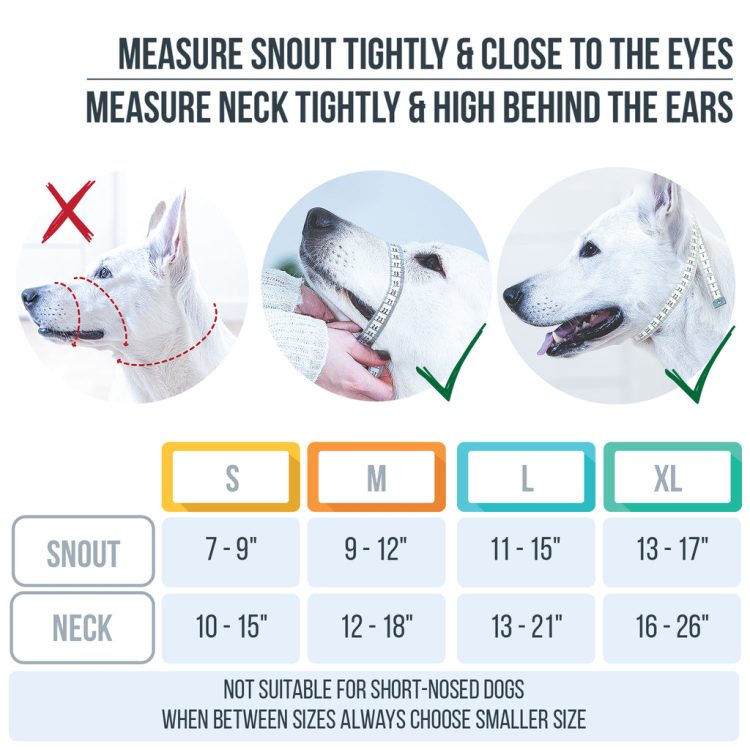To the uninitiated, the sight of a muzzled dog might evoke unwarranted unease; yet, in the tapestry of dog ownership, there are moments when the use of a muzzle is a responsible choice. The reasons for canine muzzle-wearing are many, and with a compassionate approach, they can be beneficial tools for both owner and pet.
1. Mitigating Aggression
In cases where a dog has exhibited aggression, a muzzle serves as a safeguard in social contexts. Permanent reliance on a muzzle isn’t the goal—behavioral modification with a professional can cultivate alternative, positive responses, allowing the dog to navigate anxiety with tranquility.
2. Stressful or Painful Scenarios
Even the most placid of dogs can lash out when overwhelmed by fear or pain, particularly in high-stress environments like veterinary clinics or grooming appointments. In such instances, a muzzle can act as a preventive measure, ensuring the safety of all while tending to the dog’s needs.
3. Abiding by Legal Standards
Jurisdictions vary in their stipulations for dog handling; some may enforce muzzling for specific breeds or circumstances. Compliance with local mandates not only respects the law but also shields your companion from potential legal consequences.
4. Curbing Predatory Drives
Certain breeds harbor an innate predilection for the chase. Without the freedom to roam leash-free, a muzzle can deter potential pursuits that could ensnare them in harm’s way or prove fatal to other creatures.
5. Preventive Health Measures
Dogs renowned for their indiscriminate scavenging pose risks to themselves, turning innocent walks into potential health emergencies. Although not infallible, muzzles can decrease the intake of unwanted tidbits, thus averting gastrointestinal distress.
6. Public Transport Protocols
In locales where canine companions are welcomed aboard public conveyances, muzzles may be a prerequisite. Such regulations acknowledge the presence of pets while considering the comfort and safety of fellow passengers.
Selecting The Ideal Muzzle
A vast spectrum of muzzles graces the market. Aesthetic preferences aside, the paramount concern must be the muzzle’s design—to allow for unhindered panting, hydration, and the acceptance of treats.
Basket Muzzles:
The conspicuous basket muzzle is often shunned for its assertive appearance, but its structure affords dogs ample ease for panting and hydration, shaping it into an optimal choice.
Mesh Muzzles:
Favored for their subtle design, mesh muzzles necessitate a snug fit that unfortunately poses a risk of overheating, rendering them adequate for abbreviated uses rather than extended periods.
Breed-Specific Muzzles:
Special breeds require tailored solutions, such as the Vision Hound muzzle for sylphlike-nosed greyhounds or custom models for the compact faces of brachycephalic breeds, where overheating is a pivotal concern.
Introducing The Muzzle
Constructing Positive Associations:
Begin by pairing the visual introduction of a muzzle with favored treats, weaving a positive narrative around this new object. Lure your dog to investigate the muzzle voluntarily, ensuring that each curious nudge is met with a reward.
Gradual Acclimation:
Encourage your dog to briefly insert their muzzle, gradually escalading the duration of these episodes. Internal rewards such as treat-laden peanut butter can be the initial enticement. As comfort builds, gently secure the muzzle, incrementing the duration through successive sessions.
Patience and Environment:
Throughout this journey, ensure the practice takes place within a serene setting, limit sessions to bite-sized five-minute intervals, employ high-value treats as motivation, and meticulously progress without leapfrogging stages in the quest for a muzzled peace.























































